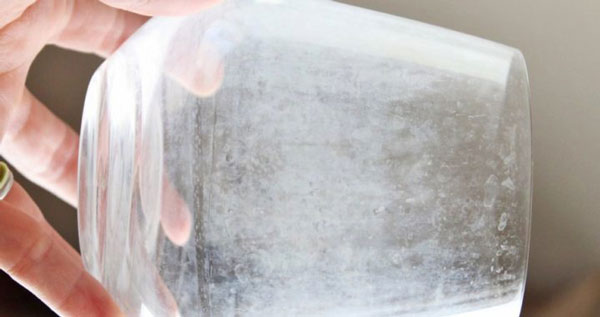Water softeners help reduce hard minerals in your domestic water supply.
Heavy metals like calcium and magnesium present in hard water can damage plumbing fixtures by creating harmful scaling, making it challenging to do your laundry and clean various fixtures around your home.
While water softeners themselves cause no issue, their residue can build up in plumbing fixtures, household fixtures, and appliances, causing hard water white spots and damaging them in the long run.
So what causes these water spots, and how can you prevent them? Read on to learn more.
How Do Water Softeners Work?
Hard water ions like calcium and magnesium can leave white spots on surfaces where hard water was used.
Water softeners work by using techniques such as ion exchange and ion bonding to remove hard minerals. However, these processes do not entirely remove your water’s ability to spot. So how do ion exchange and ion bonding water softeners work?

Ion Exchange Water Softeners
Ion exchange water softeners exchange sodium for calcium and magnesium in the water.
The white spots left behind by these softeners are sodium salts. These salts do not stick to the surface and wipe away easily. Using an ion exchange water softener reduces residue left behind, making the surface or appliance easier to clean.
Ion Bonding Water Softeners
Ion bonding water softeners bind calcium and magnesium in hard water to PolyHalt. PolyHalt is a proprietary semi-solid polyphosphate, naturally occurring in phosphorous-bearing rock. It carries a negative charge that binds to metals such as calcium, magnesium, iron, and manganese, which carry a positive charge.
If using these water softeners, the white spots left behind are the PolyHalt bound to the hard water minerals calcium and magnesium. Again, these white spots do not stick to surfaces or appliances and are easily cleaned.
What Factors Cause Water Softeners to Leave White Spots?
Wrong Type of Salt in Your Water Softener
If the water softener you are using contains the wrong type of salt, it can lead to spots.
Salts like rock salt have a high concentration of particles that aren’t water-soluble, and these turn into a white residue that settles onto glassware, windows, shower doors, dishwashers, and washing machines.
Salt Bridging and Salt Mushing
Salt bridging occurs when a solid layer of salt forms on top of the salt pile near the brine tank. This accumulation creates a gap that keeps the salt from dissolving in water, preventing your water softener from working.
Another occurrence that can cause your water softener to leave white spots is salt mushing. Salt mushing occurs when dissolved salt recrystallizes and forms soft sediment at the bottom of the brine tank. This process keeps the water softener from adequately regenerating.
TDS Content of Your Hard Water
The mineral content in your hard water is another factor that can lead to spots. Hard water has a high content of calcium and magnesium ions, and this is known as the Total Mineral Content or Total Dissolved Solids, or TDS.
TDS is a more accurate measure of whether your water will show white spotting. The higher the TDS in the water you use, the higher the spotting you’ll see after the water has evaporated.
Lack of Regular Water Softener Maintenance
If you fail to maintain your water softener, you’ll most likely experience spotting.
Calling in a professional to carry out regular maintenance procedures. The services listed below can reduce or eliminate the amount of spotting your water softener leaves:
- Calibrating water softener settings
- Checking your brine tank for salt issues
- Cleaning and flushing resin beds
- Removing hard ions
Make a point of scheduling regular water softener maintenance with Atlantic Blue to avoid these problems and reduce water spotting.
Avoid White Spots on Your Home Surfaces, Fixtures, and Appliances
Westminster homeowners can use innovative water purification technology like water softeners and reverse osmosis, or R.O., to remove the hardness in their drinking, cooking, washing, and bathing water.
Reverse osmosis uses a partially permeable membrane to remove unwanted particles such as hard water ions, making water “soft.”
The process retains the solute on the permeable membrane’s pressurized side, allowing the pure solvent to pass through to the other side of the membrane. This process reduces and eliminates your water’s TDS content, including particles and contaminants that lower your water quality and damage your household appliances, plumbing, and dishes.
A whole-house reverse osmosis system from Atlantic Blue can give you 100% spot-free cleaning in your home and increase the lifespan of your fixtures and possessions.
Connect with our friendly team of water purification specialists to learn more about reverse osmosis by calling 410-751-9200 or contacting us online. We will visit your home to carry out a detailed assessment and recommend the best reverse osmosis system that will keep your home clean and spot-free.
